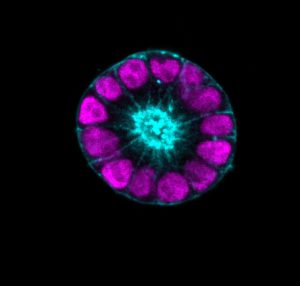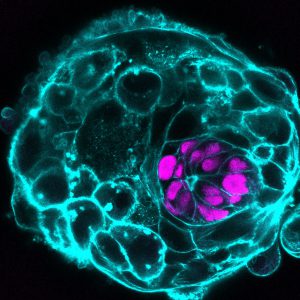Pluripotent cell identity in 3D

Pluripotent stem cells have the unique capacity to generate all the cell types of the organism. Our goal is to understand how pluripotent cells decide their fate as embryos implant in the maternal uterus. These fate decisions do not occur in isolation, but within tissues that are acquiring specific shapes. We are interested in the mechanisms that ensure the right cell types become specified at the right place. We are focusing on the segregation between somatic cells and the germline. Our recent findings have dissected how changes in tissue organisation modulate somatic differentiation and germline entry.
Selected publications:
Makhlouf, A., Wang, A., Sato, N., Rosa, V.S., Shahbazi, M.N. (2024 )
Integrin signaling in pluripotent cells acts as a gatekeeper of mouse germline entry.
Sci Adv 10(36): eadk2252
Sato, N., et al. (2024 )
Basal delamination during mouse gastrulation primes pluripotent cells for differentiation.
Dev Cell 59(10): 1252-1268.e13
Development of aneuploid human embryos

Errors occur frequently during mammalian development. For example, aneuploid cells, which contain an abnormal number of chromosomes, are found in approximately 80% of early human embryos. However, in some cases, cells can adapt their decisions to overcome these mistakes and ensure developmental success. What dictates the fate of aneuploid cells is unknown. To address this, we use supernumerary human embryos from assisted reproductive techniques. This work has been approved by the Human Fertility and Embryology Authority (HFEA) and the Cambridgeshire and Hertfordshire Research Ethics Committee.
Here you can find more detailed information about our human embryo research program.
Selected publications:
Shahbazi, M.N., Pasque, V. (2024 )
Early human development and stem cell-based human embryo models.
Cell Stem Cell 31(10): 1398-1418
Shahbazi, M.N., et al. (2020 )
Developmental potential of aneuploid human embryos cultured beyond implantation.
Nat Commun 11(1): 3987